Was the bystander effect to blame in a recent drowning tragedy? It's not so clear
Experts noted that people often hesitate to respond when a situation feels ambiguous, a key feature of the bystander effect.
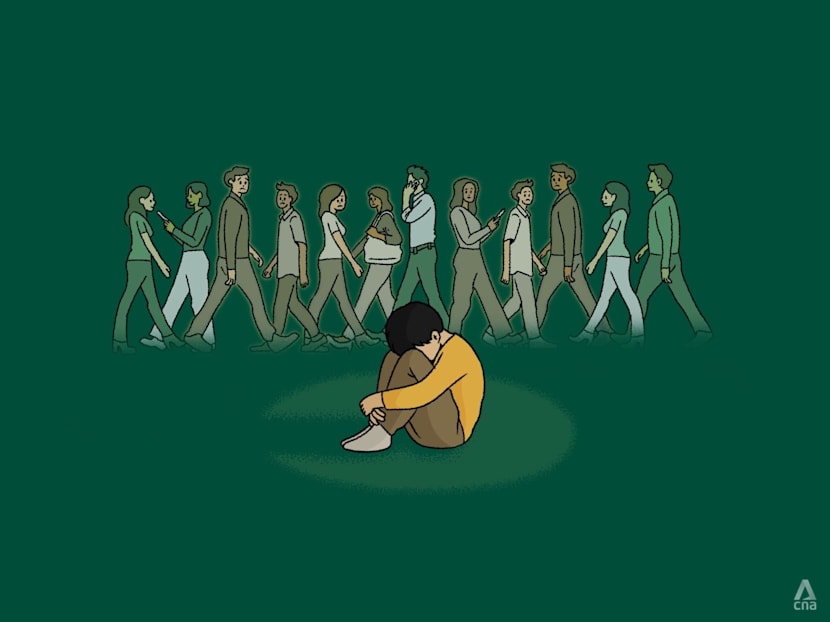
The bystander effect is a psychological phenomenon where people are less likely to help someone in need when others are present. (Illustration: CNA/Nurjannah Suhaimi)

This audio is generated by an AI tool.
Two years ago, when he saw a car spin out of control on a highway bend and end up facing the wrong direction, Mr Shafik Walakaka didn't hesitate. He pulled over, positioned his vehicle to block the oncoming traffic, and got out.
He proceeded to check on the driver who was semi-conscious, could not walk and was being assisted out of the car by his passenger.
Mr Shafik dialled 995, relaying the man's condition, the car's registration number, and the nearest lamp post number so paramedics could reach the scene quickly.
"It was drilled into me during (national service) reservist," the 33-year-old IT project manager said. "I knew exactly what to look for and what details the operator would need."
Even though it was a busy road in the Woodlands area, Mr Shafik said he wasn't nervous.
"It was very clear what I needed to do. I just executed the steps I had been drilled on," he said. "That made the difference."
What may also have made a difference is the fact that the incident Mr Shafik witnessed was a clear-cut emergency. Some other situations are not so stark.
Ms Kate Lim, 46, was on an MRT train recently when she noticed a girl, about five or six years old, with a huge backpack sitting alone. The healthcare worker noted that the girl wasn't crying and appeared calm, scrolling on her phone.
Ms Lim continued scanning her surroundings for a parent or caregiver, but did not see anyone. Shortly after, the little girl stood in front of Ms Lim for a while before moving further down the carriage.
"I kept thinking if I should have spoken to her and asked her if she was okay," said Ms Lim, a mother of three boys aged between 10 and 17 years old. "But I also had the worry that other people might misperceive my intentions."
As a healthcare worker, Ms Lim is familiar with emergency situations as she is trained in basic cardiac life support, which includes life-saving techniques such as cardiopulmonary resuscitation (CPR) and using an automated external defibrillator (AED). She noted that her job also requires her to renew this training regularly.
But this training did not prepare her for that situation, where it was not apparent whether the girl really needed help.
"It's not because of apathy that I did not approach her," said Ms Lim. She added that the little girl seemed capable of fending for herself, though Ms Lim did find it "peculiar" to see someone so young alone in the train.
Such hesitation lies at the core of the bystander effect – a phenomenon that came into sharp focus in the recent case of 11-year-old Muhammad Hairil Effendi, who was found floating in the sea off East Coast Park on Aug 31 and pronounced dead at the scene.
He had been missing for more than a day by that point, and had been seen by several people, wandering shirtless and barefoot in several public areas.
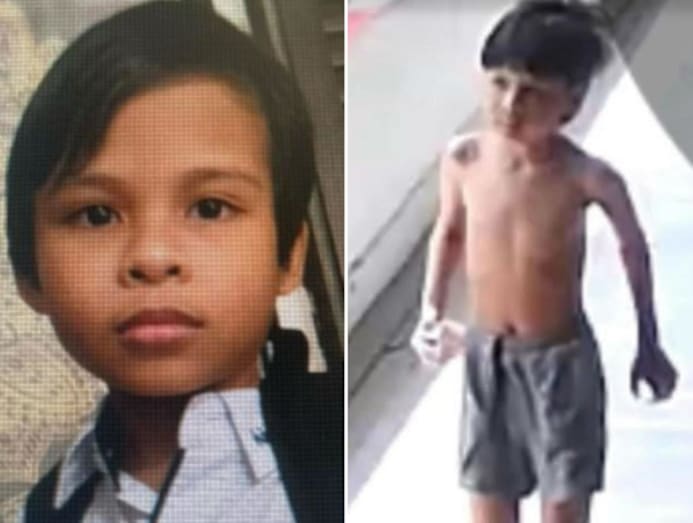
Although it's unclear whether any intervention could have changed the outcome of that tragedy, the case has sparked online debate over why no one stepped in.
Experts know why: When the danger is obvious, such as the accident Mr Shafik encountered, people are far more likely to step in. But when the situation feels "ambiguous," as with the girl on the train or Hairil wandering alone, onlookers or passers-by often second-guess themselves.
While some people were quick to blame inaction on a general sense of apathy among Singaporeans, experts suggested that in situations like Hairil's, it is not indifference that stops people from intervening, but rather their perception of whether the event poses a real danger.
"It's not that people don't care, it's that they often don't understand what's happening," said Assistant Professor Lisa Walsh, a social psychologist from Nanyang Technological University (NTU).
She explained that there are five steps to bystander intervention, and if anything "short-circuits" at any point in the process, it can stop someone from offering assistance.
Before helping, people must first notice the situation; interpret it as an emergency; take responsibility; decide how to help; and finally take action.
As such, the bystander effect is more about how people interpret the situation that is in front of them.
One study found that people are 19 times more likely to intervene when danger is clear and immediate.
However, when the situation is less obvious, such as noticing an elderly person carrying heavy shopping bags or a child wandering alone, hesitation increases. Uncertainty and fear of possible consequences often stop bystanders from acting.
"People tend to be afraid of costs to themselves when stepping in, and it is also common for individuals to doubt their own ability to successfully step in and provide help, leading them to hesitate," said Dr Vincent Oh, senior lecturer of psychology at Singapore University of Social Sciences (SUSS).
Agreeing, Associate Professor Razwana Begum, head of the Public Safety and Security Programme at SUSS, added that uncertainty is a significant barrier.
"Many hesitate because of uncertainty – they are unsure whether the situation is serious, unsure what the 'right' response should be, or afraid of making matters worse," she said.
"But when children are at risk, the cost of hesitation can be irreversible."
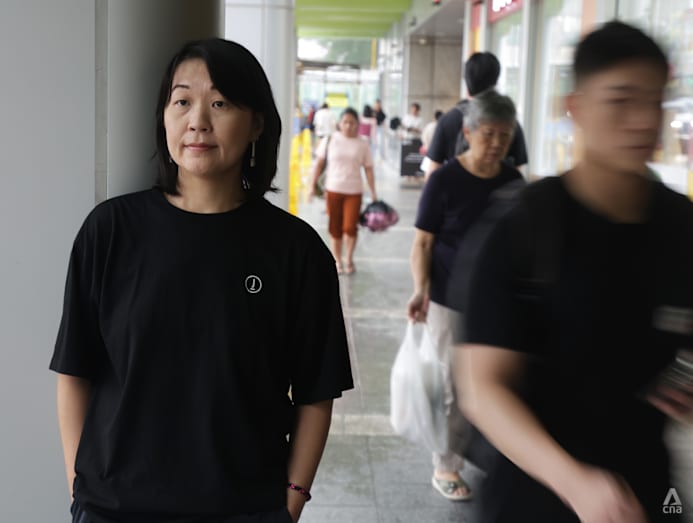
A WIDESPREAD PHENOMENON
The bystander effect is a psychological phenomenon where people are less likely to help someone in need when others are present.
The theory was first proposed by psychologists Bibb Latané and John Darley in 1968 after the widely reported murder of Kitty Genovese in New York City. In 1964, Ms Genovese was stabbed to death outside her apartment. Early news reports claimed that as many as 38 neighbours witnessed the attack but did nothing.
Later investigations revealed that the reports were exaggerated, but the case nonetheless inspired decades of research. Those studies consistently showed that the bystander effect is real and robust across cultures and contexts.
Psychologists Latané and Darley identified three key forces behind the bystander effect:
diffusion of responsibility, where people assume someone else will intervene
evaluation apprehension, where individuals fear being judged or making a mistake
pluralistic ignorance, where people look to others for cues, see no one acting, and mistakenly interpret this as a sign that everything is fine.
Asst Prof Walsh added that research supports the idea that a sudden crisis can be overwhelming for people, causing them to freeze momentarily.
"Part of this is a basic human stress response, which we often call fight, flight, or freeze. When confronted with an unexpected emergency, some individuals sort of instinctively freeze on the spot, like they're unsure how to react," she said.
She said the shock of the situation, combined with seeing a crowd of onlookers, especially if they're not doing anything, can lead to a sort of paralysis, where everyone is waiting for someone else to move first.
Another factor that contributes to the bystander effect is when people doubt their interpretation of the event and wonder whether there is any real danger or if they have misread it.
Dr Oh from SUSS added that uncertainty plays a significant role, noting that people may doubt their ability to help, worry about worsening the situation, or fear being wrongly accused of a misdeed.
Ms Michelle Tay, executive director of the Singapore Kindness Movement (SKM), said that fear is the most common barrier when it comes to intervening.
"Fears like the aversion to being publicly judged, the fear that their actions will draw unnecessary attention and even the fear that they are not the 'right' person to help," she said.
Asst Prof Walsh pointed out that ambiguous situations make hesitation even more likely.
For example, in the case of 11-year-old Hairil, passers-by may have assumed that he was simply playing near the beach, and the fact that he was wandering barefoot and shirtless would not have seemed alarming.
When someone notices a child running around without an adult guardian nearby, they may feel a flicker of concern, but the next step is deciding whether it is truly an emergency, said Asst Prof Walsh.
"If no one else reacts, people can assume nothing is wrong, leading to pluralistic ignorance," she added.
And given the prevalence of scams nowadays, people might wonder whether someone in an ambiguous situation could be a scammer who is out to lure victims, Dr Oh said.
"This makes them even more hesitant to step in when the situation is uncertain and the danger isn't immediately obvious," he said.
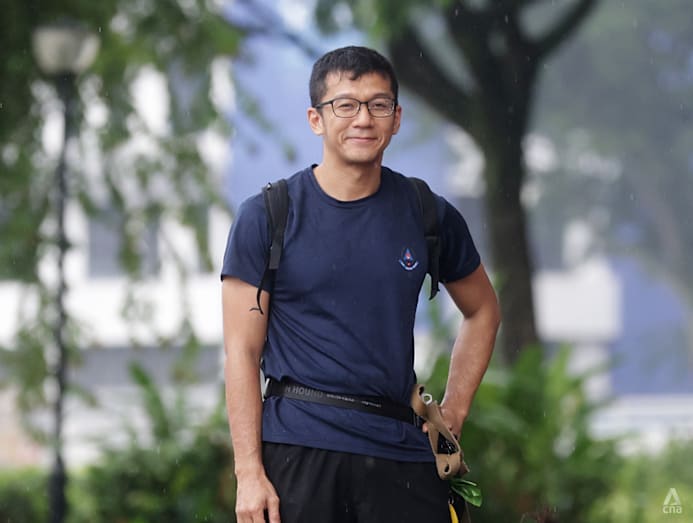
TO ACT OR NOT TO ACT
Even with training or experience, many bystanders who have been spurred to action told CNA TODAY that they still feel a surge of fear in the moment, but the confidence of knowing what to do can be enough to overcome that feeling.
In 2021, Ms Lim the healthcare worker was at home when she heard a loud crash. Looking down from her flat, she saw a delivery rider sprawled on the road after colliding with a taxi. She hesitated briefly before gathering her stethoscope, some plasters and alcohol wipes, and rushing down.
"I found myself trembling a little bit," said Ms Lim. Even though she is used to seeing some blood in her line of duty, she said she still felt some fear and hesitation.
Once at the scene, her first aid training kicked in. She checked that the rider was alert, asked if he was giddy or in pain, and cleaned his bleeding wounds before tying a clean T-shirt she had with her around his knee to slow the blood loss.
"I asked if he could move his legs to make sure there wasn't a fracture, but I didn't want to move him too much until the ambulance came," she said.
Mr Yat Muhammad Noor is another person whose skills and training gave him the confidence to overcome initial fears and step into a dangerous situation to help someone.
Back in 2015, it was past midnight when Mr Yat heard a woman's screams while he was passing by an alley near Cineleisure mall in Orchard, after watching a late-night film at Cathay Cineplex.
Alarmed, the then 28-year-old Mr Yat hurried over and saw two "huge" men holding the woman down, while a third was raining blows on her. A group of about five bystanders stood frozen nearby, he said.
"Instead of helping, one of them took out their mobile phone and started recording the whole thing. I think they just didn't want to be part of it and were scared (the men) would retaliate," he said.
Mr Yat, who works in the shipping industry, had trained in the Japanese martial art of aikido from the age of 13 and spent several years competing in semi-professional boxing. He said his background gave him the confidence to confront the men.
Though nervous, he felt he had no choice but to act. After telling his companion to call the police, he entered the fray, knocking one assailant unconscious, fending off the others, and ultimately disarming a knife-wielding attacker.
"I told myself, if I don't do anything, this girl might die," he recalled. Mr Yat said the woman's white top was soaked with blood.
Looking back, Mr Yat said it was an extreme case and he could understand why someone would not want to get involved. Still, at that moment, he felt he had done the right thing, even at the risk of his own life.
While such a life-or-death situation may not be common, smaller, everyday emergencies can also benefit from quick action.
For Ms Lim, her CPR training prompted her to sign up for the myResponder app, which alerts the public to nearby incidents such as minor fires or suspected cardiac arrests. The app is run by the Singapore Civil Defence Force (SCDF).
Similarly, in July, Mr Muhammad Syimir Mohd Daud, 30, and Mr Mohammad Zaim Abdul Ghani, 42, used a hose reel to extinguish a refuse chute fire at a housing block around Guan Road after receiving a myResponder alert, before SCDF arrived.
They were later honoured with the SCDF Community First Responder Award.
Like Mr Shafik, the duo said their national service and reservist training in skills such as CPR, AED and fire safety gave them the confidence to step in and put out the fire.
Mr Zaim, a freelance nurse, said that when it comes to using an AED, proper training is essential to avoid endangering oneself and others.
"If you’re trained, join programmes like myResponder or Community First Responders, because every additional person adds to the pool of people ready to respond when needed," he said.
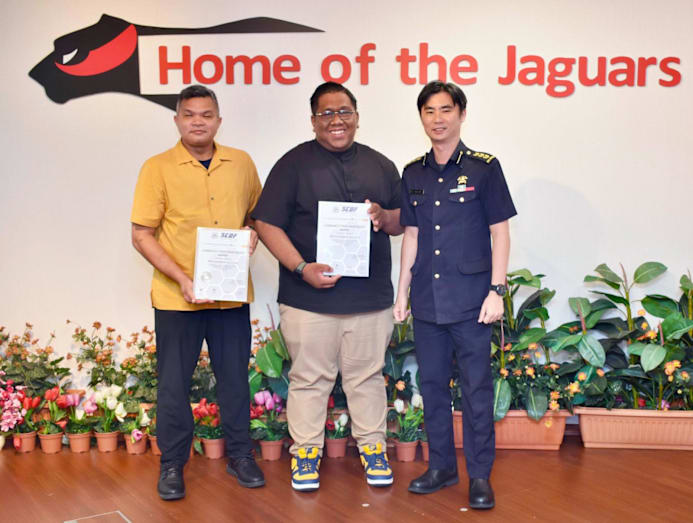
My Syimir, who works as a surveyor, added: “We must be brave to help the community. People shouldn’t be afraid to step in and help others. I know some worry about being judged, but if you’ve been trained in CPR or even basic fire safety, you can make a difference."
While being trained in first aid is always useful, Ms Lim noted that one doesn't need to have special skills to help.
"Even if you can't directly provide assistance for someone who is injured, you can also be the first one to call for the police or ambulance," she said.
Agreeing, Mr Shafik said that based on his experience, when someone calls 995, the operator will guide them on what to do, so special training is not required.
"I think the biggest misconception (when it comes to helping) is that people will actually look at you and judge you. So even if you've made a mistake, as long as you step in, I think it will actually be for the better," he said.
Experts said there is often a domino effect when it comes to offering assistance.
"Because when one person is helping, the pressure of being judged negatively immediately lessens because this 'burden' is now shared with the first person to help," said Ms Tay of the SKM.
And when one person steps in, it signals that help is truly needed, reducing pluralistic ignorance and making it harder for others to look away, she added.
"When one person takes action — whether raising an alert, calling the authorities, or offering support — it often breaks the paralysis and encourages others to step in," said Assoc Prof Razwana.
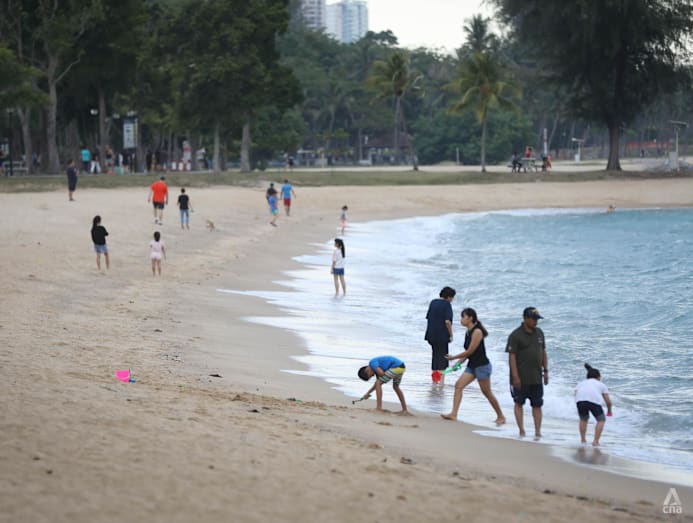
PERSONAL SAFETY A TOP PRIORITY
While stepping forward can make a difference, it should never come at the expense of personal safety, authorities stressed.
According to the police and SCDF, the public should help only when it is safe to do so, and to call 999 or 995 immediately in an emergency.
To strengthen community readiness, SCDF said it conducts regular outreach through platforms such as Community Resilience Day events and the Responders Plus Programme (RPP), where residents can pick up vital lifesaving skills.
Members of the public are also encouraged to register as Community First Responders (CFRs) via the SCDF myResponder app, which alerts them to nearby cardiac arrest cases and minor fires, and also helps locate nearby AEDs.
Since the launch of the app in 2015, 113 cardiac arrest victims have been saved by CFRs who were alerted through the app.
As of August 2025, there are more than 230,000 CFRs registered on the myResponder app.
When it comes to terror attacks, the Ministry of Home Affairs (MHA) said it studied advisories from other countries before developing Singapore’s own “Run, Hide, Tell” guidance.
“‘Run, Hide, Tell’ is a simple, clear and easy-to-remember message that members of the public can easily recall and apply to stay out of harm’s way during a terror attack by acting decisively rather than freezing in fear,” the ministry said.
They added that SGSecure advisories emphasise personal safety first, while also guiding individuals to balance this instinct with the desire to help others.
"Once in a safe location, bystanders can play critical roles in reporting and providing timely information to authorities, and assisting victims."
In more ambiguous situations, such as witnessing a fainting commuter or a child who looks lost, members of the public are often encouraged to step in safely, such as offering comfort or alerting the right help.
Experts noted that the advent of smartphones has complicated the issue, with some bystanders quicker to record than intervene in an unusual situation.
"Smartphones can be helpful in providing evidence, but they can also reinforce passivity. Recording is not the same as intervening," said Assoc Prof Razwana.
Sharing her sentiments, Ms Tay said that smartphones can increase bystander apathy by facilitating psychological detachment and diffusion of responsibility.
"Witnesses may feel less personal obligation to help if they are focused on recording an event or assuming others will intervene.
Ms Tay added that the act of filming can create a sense of psychological distance, turning the user into a passive observer rather than an active helper, especially as social media provides a platform to share the footage.
However, Dr Oh said smartphones are likely a symptom of the bystander effect rather than a direct cause. He said that people who record on their phones aren't necessarily less likely to help.
"The bystander effect is a larger social psychological phenomenon that has been documented long before smartphones existed as well," he said.
Ms Lim suggested that there should be more overt public education to encourage people to take action rather than remain bystanders.
Assoc Prof Razwana stressed the need for "simple, visible guidance" such as posters, campaigns and training that show what to do if a child appears lost or distressed.
Hotlines and apps, she added, give bystanders an easy way to alert authorities without hesitation.
"It's always better to err on the side of caution when it comes to children's safety," she said.
Whether it is online or offline campaigns, Ms Tay of the SKM said that Singaporeans should recognise their civic duty and benefit their community, regardless of the number of people around them.
"Singaporeans must realise that our greatest resource is our people. When we see something out of place, we must act because we are all we have got."
Ms Lim added: "We have to realise it can't just be families or school teachers who help, the rest of us are part of the community too."
"The tragic loss of Muhammad Hairil Effendi is a stark reminder that child safety is not just a family responsibility but a collective one," said Assoc Prof Razwana.
"True safety comes when communities are empowered to step forward, when vigilance becomes second nature, and when we as a society refuse to look away."












